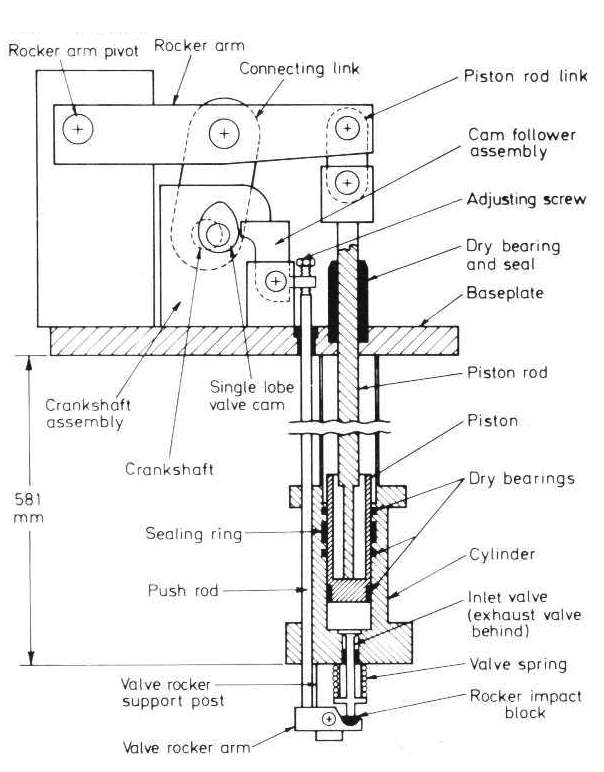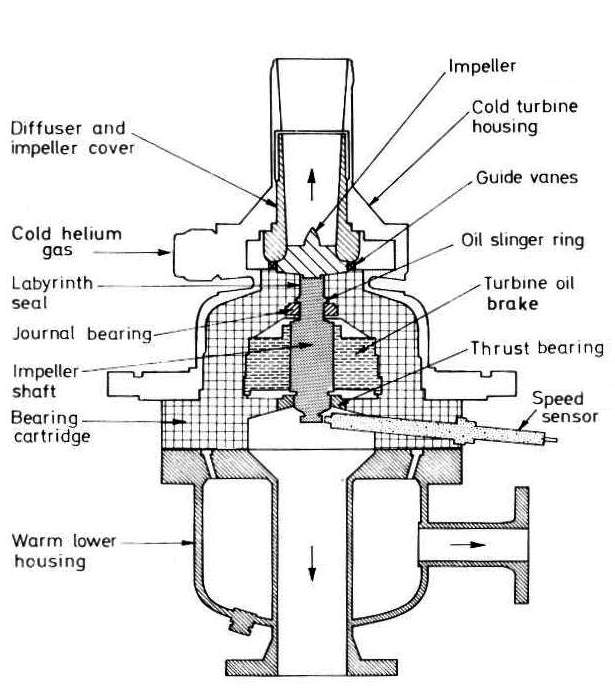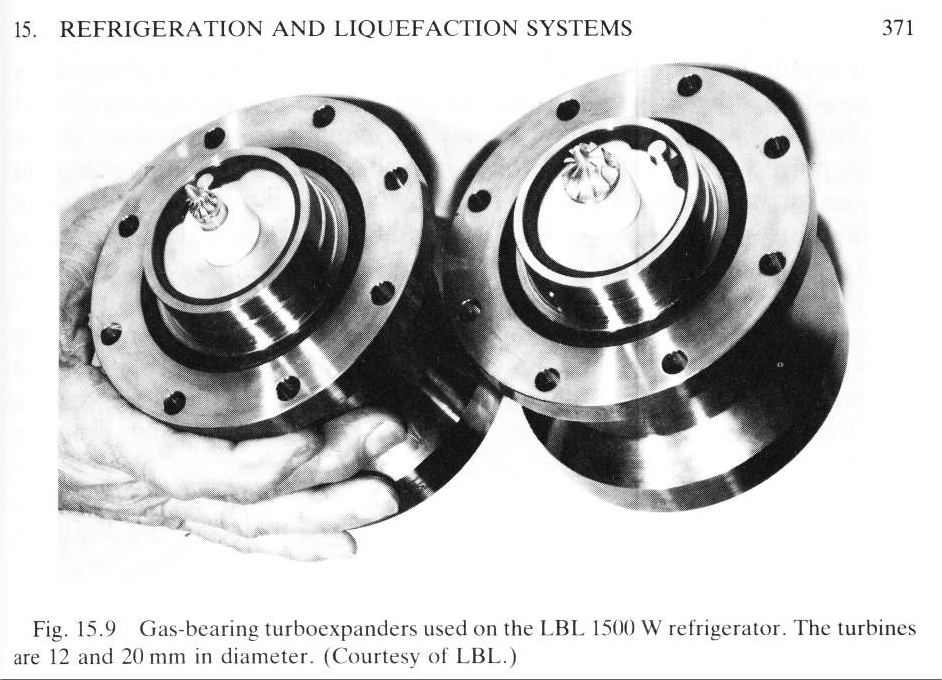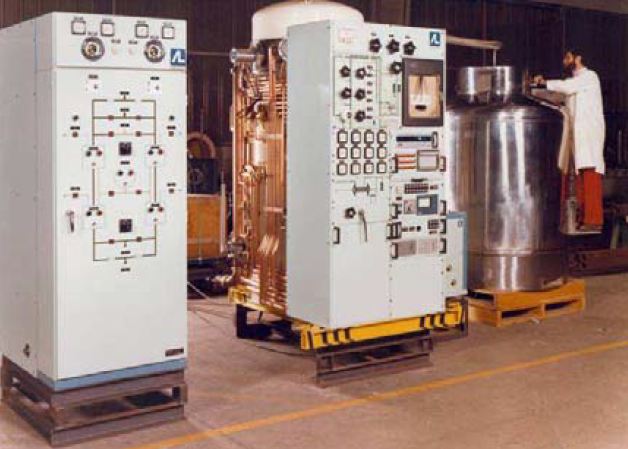Gallery opened: 29 April 2015 |
Helium engines
|
Gallery opened: 29 April 2015
Updated: 12 July 2024
Helium purification info added here.


The main reason to make a helium engine is to liquefy helium efficently, though there is some interest in helium-cooled nuclear reactors. As for liquid air, using an expansion engine rather than a Joule-Thomson throttle valve to drop the gas pressure, as in the Linde cycle, gives more efficient cooling because work is being taken out of the system. A further complication fully explained in the link is that a gas must be below its inversion temperature to be liquefied in this way, and so simple Linde cycle liquefiers cannot normally be used to liquefy neon, (BP -246.1 degC) hydrogen, (BP -252.9 degC) or helium (BP -269 degC) and the use of an expansion engine is then essential for reasonable efficiency.
 | Left: Helium piston engine for wet expansion
|
 | Left: Section through a helium turbine
|
 | Left: Two helium turbines of different size
|
 | Left: The helium HP turbine of the HHT test system: Germany
|
Helium-cooled reactors have a Wikipedia page.
 | Left: The turbine rotor of the HHV test system: Germany
|
 | Left: One-third scale helium compressor: Japan
|
 | Left: Sulzer helium turbiner
|
 | Left: Helium Liquefaction Plant: France
|
 | Left: Twin Helium Turbines in Grenoble, France
|

  
|